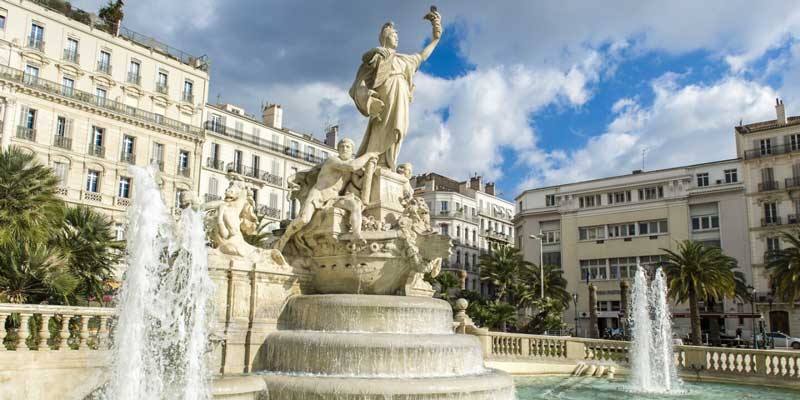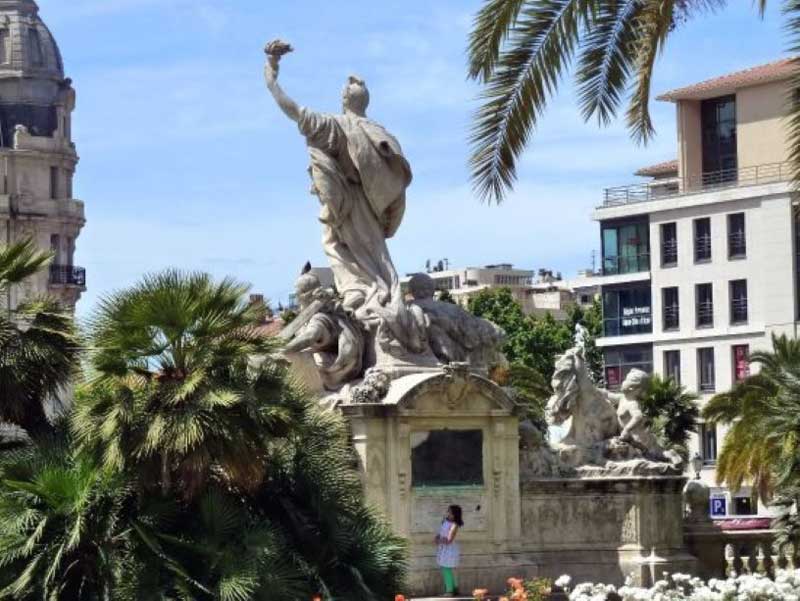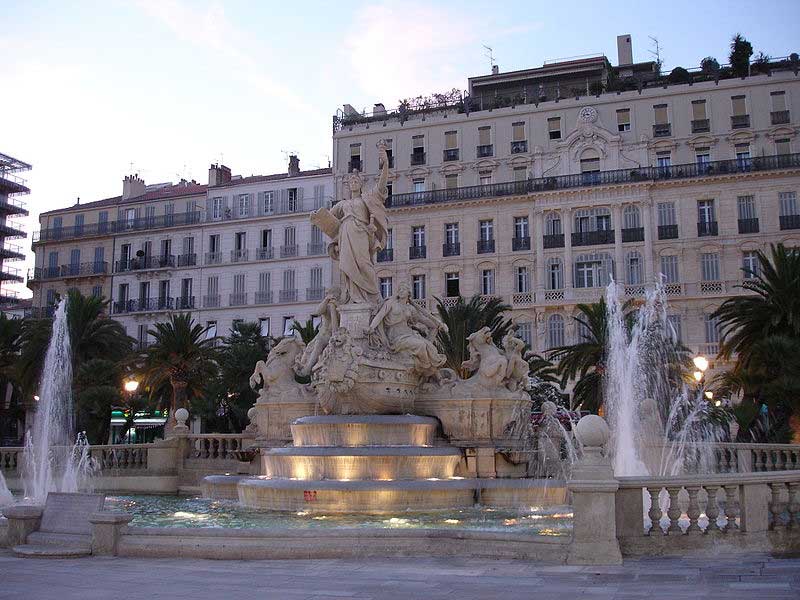
Located in the Place de la Liberté, the vast square in the heart of the city of Toulon on the Boulevard de Strasbourg, one of the main arteries of the city, Fontaine de la Fédération, almost contemporary with the Eiffel Tower of Paris, was inaugurated in April 1889, on the occasion of the centenary of the French Revolution. The beautiful fountain, a jewel of the architectural style during the time of its creation, was designed by the architect Gaudensi Allar and sculpted by his brother André Allar, an artist from Toulon, who was Grand Prix de Rome and worked at that time on numerous projects in the city. The fountain, made of Calissane stone, a typical white limestone and composed of a basin surmounted by allegorical figures of Liberty, Justice and Force, signifies the transport of The Statue of Liberty, a gift of friendship from the people of France to the people of the United States for the celebration of the centennial of the American Declaration of Independence, departing Toulon on the frigate Isère for the United States of America.

Place de la Liberté, originally called the Place d’Armes, was renamed in 1889 to commemorate the centennial of the French Revolution.
The huge square, an emblematic place of the city of Toulon, is bound on the north side by the impressive Grand Hôtel, now home to the new Théâtre Liberté, which provides a perfect backdrop to the Fountain of the Federation, a dramatic composition, complete with the triumphant sculptures consisting of a sculpted group, which stands in the centre of a large oval basin, embellished with waterfalls and water jets. The fountain represents three allegorical figures symbolising Liberty, standing on a pedestal marked with the initials RF, flanked by a male figure representing the Strength or Force of the Right of the people on the right and a female figure representing Justice on the left. All those three figures are depicted as sitting on the prow of an antique ship, the rostrum of which is adorned with a garland of flowers. The lower level of the sculpture shows sea horses springing from the waves, ridden by putti, a naked child, a cherub in Renaissance art. The figures in the central sculpted group are placed on a series of semicircular basins forming waterfalls and on each side a fantastic mascaron pours water into a shell-shaped basin.

However, Fontaine de la Fédération in Toulon is dominated by the tall Statue, symbolising Liberty, elegantly standing on a pedestal with a helmet on her head and a sword attached to her belt and proudly raising a torch in her left hand and holding the Declaration of the Rights of Man and the Citizen in the other hand. The male figure on her right, representing the Strength or Force of the Right of the people, instead of holding the usual mace referring to the ancient Hercules, holds a lictor's fasces, a bundle of rods with a projecting axe blade, which is a symbol of the Judicial power and one of the revolutionary symbols.
However, the female figure on her right, signifying Justice, holds the usual symbols, the sword and the scales, but instead of the sword pointing downwards as is often the case, is raised and resting on her shoulder, which is another allusion to the Revolution.

An inscription on white marble, located at the rear side of the fountain, recalls that the monument was erected in 1889 and that it was officially inaugurated on 20 April 1890, in the presence of the President of the Republic, Sadi Carnot and above the dedicatory plaque, there is a bronze bas-relief depicting the Federation Day, which was celebrated in the Champs de Mars in Paris on 14 July 1790.

Although the beautiful piece of sculpture suffered severe damage during the bombings of 1944, the damage was repaired subsequently.
Today, with its fantastic panorama, surrounded by several cafes and restaurants, Place de la Liberte has become a popular location for the locals to enjoy their weekends and leisure time.
